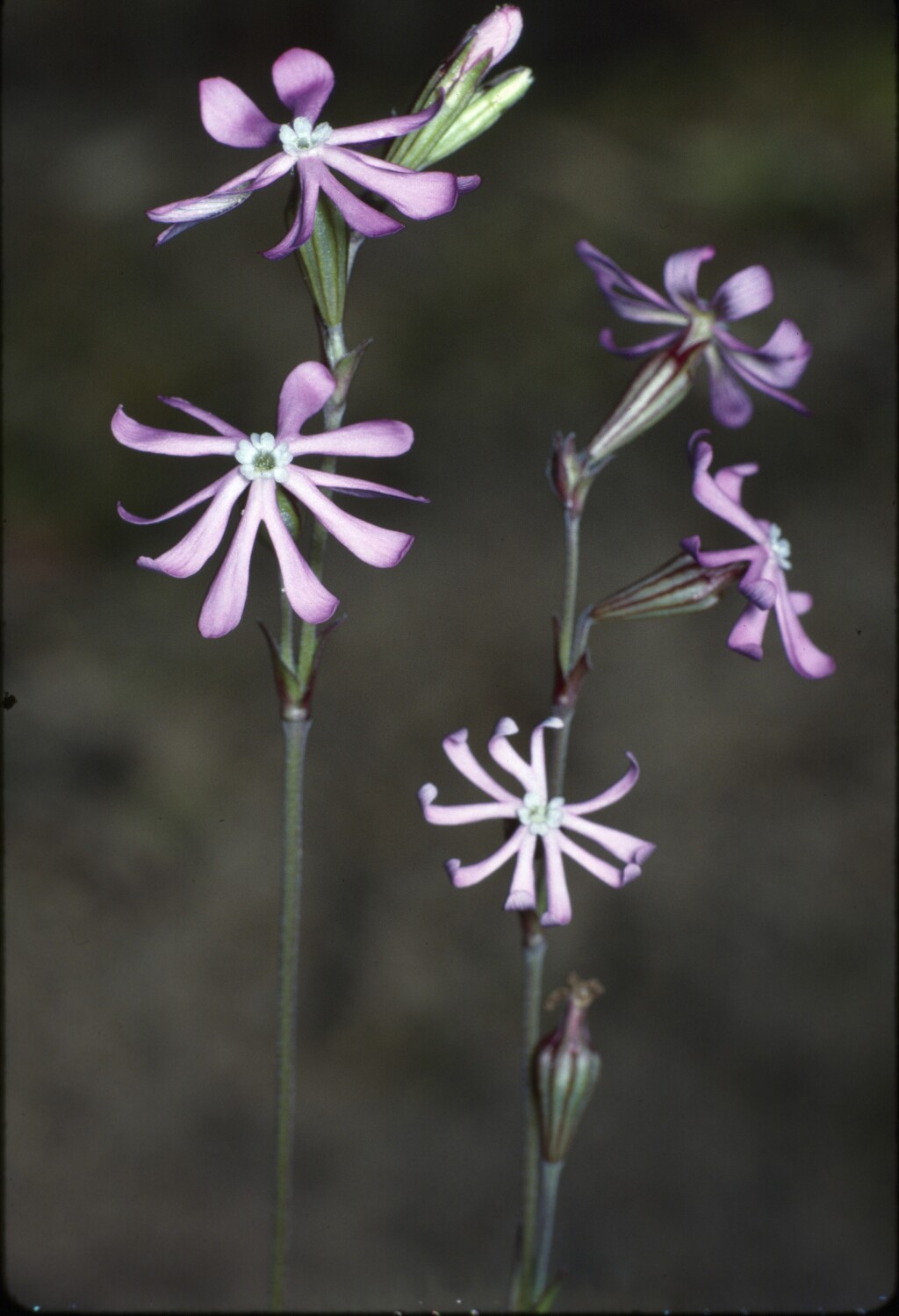Silene longicaulis
Pourr. ex Lag. Portuguese CatchflyAnnual; pubescent or hispid, glabrescent above. Stems erect, simple or sparsely-branched, 10–40 cm high. Leaves more or less sessile, ovate-lanceolate to subspathulate, 25–35 mm long, 5–10 mm wide, pubescent. Inflorescence terminal, few-flowered; bracts herbaceous. Flowers bisexual, pedicels of lower flowers 2–5 times as long as calyx; calyx cylindric-clavate, oblong and larger in fruit, 9–13 mm long, 10-veined, the veins purplish, pubescent or glabrous, calyx-lobes triangular-acute, white-ciliate; petal-limb c. 5 mm long, pink, bifid; styles 3. Capsule ovoid-oblong, 7.5–11 mm long; carpophore 2.5–3.5 mm long, subglabrous; seeds reniform, flattened, dorsal rim with 2 undulate wings, chestnut-brown, striate, 1–1.5 mm long. Flowers Aug.–Oct.
LoM, MuM, RobP, GipP. Also naturalised SA. Native to the south-west of the Iberian Peninsula. A sparsely-occurring weed so far recorded only from south-eastern Australia.
Adams, L.G. (1996). Caryophyllaceae. In: Walsh, N.G.; Entwisle, T.J., Flora of Victoria Vol. 3, Dicotyledons Winteraceae to Myrtaceae, pp. 228–271. Inkata Press, Melbourne.
 Spinning
Spinning

